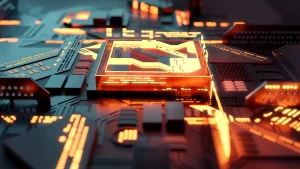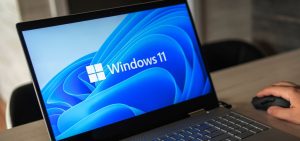For many computer users in the UK, the trusty single screen has served faithfully for years. But for those seeking a productivity boost or a more immersive entertainment experience, the world of dual monitors beckons. With a second screen at your disposal, multitasking becomes a doddle, research gets streamlined, and gaming takes on a whole new dimension. But before you dive into this realm, a crucial question arises: can your computer handle it, and does it require a dedicated graphics card?
The Advantages of Dual Monitors
Imagine having two separate workspaces at your fingertips. With dual monitors, you can:
- Multitask like a pro: Draft an email while referencing a spreadsheet on the other screen. Research online while writing a paper. Compare documents side-by-side. Dual monitors eliminate the constant need to minimise and maximise windows, saving you precious time and mental strain.
- Expand your creative horizons: Designers can view their work full-screen while keeping their toolbars and palettes readily available on the second monitor. Video editors can have their editing timeline on one screen and their footage preview on the other. The possibilities for streamlined workflows are endless.
- Enhance your gaming experience: Immerse yourself in sprawling landscapes or expansive battlefields. Dual monitors allow you to keep an eye on your inventory or map while enjoying the game’s visuals on the main screen. Some games even offer specific features designed for multi-monitor setups.
- Boost your productivity: Stock traders can monitor multiple markets simultaneously. Programmers can write code on one screen while referencing documentation on the other. The ability to keep essential information readily visible can significantly improve efficiency with any task.
Integrated Graphics vs. Dedicated Graphics Card Comparison
Now, let’s address the elephant in the room: graphics cards. While the convenience of dual monitors is undeniable, the question of whether your computer can handle it depends on your graphics capabilities. There are two main options: integrated graphics and dedicated graphics cards.
-
Integrated Graphics: Most modern CPUs come equipped with integrated graphics processing units (GPUs). These are built directly onto the CPU chip and offer basic functionality for displaying visuals. While integrated graphics can certainly handle a dual-monitor setup, there are limitations.
- Performance: Integrated graphics are designed for everyday tasks, not intensive applications. Running demanding programs like video editing software or high-end games on dual monitors with integrated graphics might result in lag, stuttering, and a less than ideal experience.
- Display Outputs: Not all computers with integrated graphics offer multiple display outputs like HDMI or DisplayPort. You might need to use adapters or specific docking stations to connect two monitors.
-
Dedicated Graphics Cards: A dedicated graphics card is a separate component installed in your computer specifically for processing graphics. These cards offer significantly more power and dedicated memory compared to integrated graphics. Here’s why they shine for dual monitors:
- Performance: Dedicated graphics cards are built to handle demanding workloads. With a dedicated card, you can expect smoother performance on dual monitors, even with resource-intensive applications or high-resolution displays.
- Display Outputs: Most dedicated graphics cards offer multiple display outputs, allowing for a straightforward dual-monitor setup without the need for adapters.
Choosing the Right Path
So, do you absolutely need a dedicated graphics card for dual monitors? The answer depends on your intended use:
- Basic Multitasking: If you’re using dual monitors for browsing the web, checking emails, and working with documents, integrated graphics should generally suffice.
- Creative Workflows & Gaming: If you plan on using demanding software like video editing tools or high-end games, a dedicated graphics card is highly recommended. The improved performance will ensure a smooth and enjoyable experience.
- Resolution Matters: Higher screen resolutions, particularly 4K, require more processing power. If you intend to use high-resolution monitors, a dedicated graphics card becomes even more crucial.
Setting Up Your Dual-Monitor Paradise
Once you’ve determined your graphics capabilities, setting up your dual-monitor workstation is a breeze:
- Connect the Monitors: Use the appropriate cables (HDMI, DisplayPort, etc.) to connect your monitors to the available display outputs on your computer.
- Configure Your Settings: Most operating systems automatically detect the new monitor. You can access display settings to adjust the resolution, orientation, and primary/secondary display configurations.
Here are some additional tips for a seamless dual-monitor experience:
- Match Your Monitors: While not essential, having monitors with the same size and resolution can create a more visually balanced setup.
- Explore Multitasking Tools: Utilize software features like virtual desktops or window snapping tools to further optimise your workspace management.
- Adjust the Height: Ensure both monitors are positioned at a comfortable height for usage.
Beyond the Basics: Optimising Your Dual-Monitor Setup
With your dual-monitor setup up and running, it’s time to delve into some advanced strategies to maximise your productivity and enjoyment.
Tailoring Your Displays:
-
- Primary vs. Secondary: Decide which monitor will be your primary workspace. This is usually the one you face directly and use for most tasks. The secondary monitor can then house frequently used applications, reference materials, or chat windows.
Aligning Your Workflows:
- Task-Specific Layouts: Arrange your windows strategically based on your activities. For example, while writing, keep your document open on the primary monitor and research materials or editing tools on the secondary one. When coding, use one screen for your code editor and the other for debugging tools or reference guides.
Utilizing Multitasking Tools:
- Virtual Desktops: Many operating systems offer virtual desktop functionality. This allows you to create multiple virtual desktops, each with a specific arrangement of windows for different tasks. You can then easily switch between these desktops for a clean and organised workspace.
- Window Snapping: Most operating systems allow you to “snap” windows to specific screen sections with keyboard shortcuts or dragging them to the edges. This helps you quickly arrange windows in a side-by-side or tiled layout for efficient multitasking.
Software for Dual-Monitor Mastery
Several software applications can further elevate your dual-monitor experience:
- Display Management Software: These programs offer advanced control over your monitor configuration. You can create custom display profiles, adjust colour settings for each monitor, and manage multi-monitor hotkeys for a truly personalised setup.
- Window Management Tools: Software like Fancy Zones (Windows) or Rectangle (Mac) provides additional window snapping and tiling options, allowing you to create more complex and customised layouts for your specific needs.
- Task Management Applications: These tools can help you organise your workflow across multiple monitors. You can create task lists, track project progress, and set reminders, all with a clear overview on one of your screens.
Troubleshooting Common Dual-Monitor Hiccups
While setting up dual monitors is generally straightforward, you might encounter some minor hurdles:
- Monitor Detection Issues: If your computer doesn’t automatically detect the second monitor, consult your graphics card’s manual or the motherboard’s documentation for troubleshooting steps. You might need to manually adjust display settings in your operating system.
- Display Resolution Mismatch: If your monitors have different resolutions, you can adjust the settings for each one individually in the display settings. Ideally, choose the monitor’s native resolution for optimal picture quality.
- Performance Lag: If you experience lag or stuttering while using demanding applications on dual monitors with integrated graphics, consider upgrading to a dedicated graphics card for smoother performance.
Conclusion
Dual monitors offer a wealth of benefits for both productivity and entertainment. By understanding your graphics capabilities and taking advantage of the customisation options available, you can create a dual-monitor setup that perfectly suits your needs. So, embrace the extra screen real estate, explore the software tools at your disposal, and unlock a whole new level of efficiency and enjoyment for your computing experience. For assistance setting up a dual monitor system, contact PC Fixer Cumbria.



